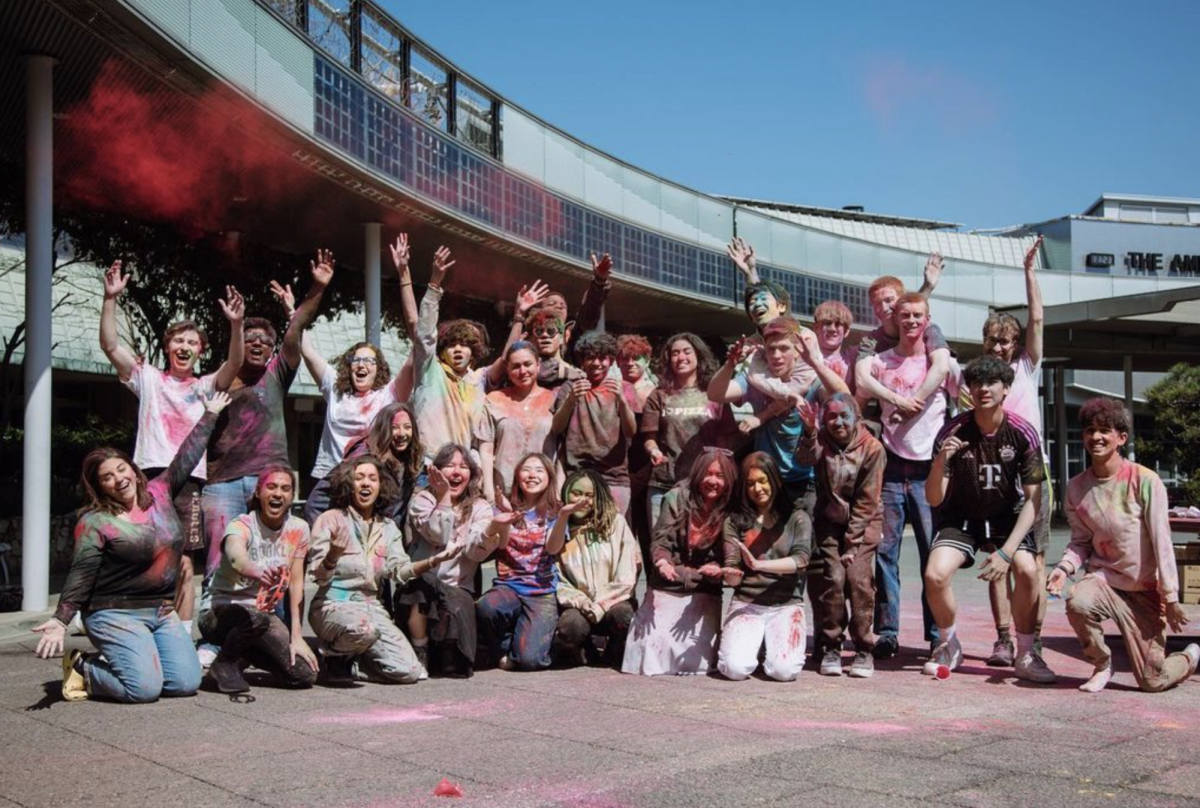The first handful of brightly colored powder was flung into the air. Cheers erupted as powdery clouds of red, pink, blue, green, and yellow transformed the bus turnaround. With every toss and throw, faces were smeared with streaks of pink and blue, clothes colored with splashes of every shade imaginable. Holi had begun.
Friday, March 15 marked the South Asian Student Union’s (SASU) second annual celebration of Holi. The event featured colored-powder throwing at the bus turnaround and offerings of chai, samosas, and badam halwa in the MPR. Aimed at offering students a glimpse into South Asian culture and heralding the arrival of spring, the day was filled with colorful festivities.
Holi, a Hindu festival known as the festival of colors, love, and spring, holds deep roots in Indian mythology. It is seen by adherents as symbolizing the bond of love between the deities Radha and Krishna while also commemorating the victory of Vishnu in his Narasimha avatar over the demon king Hiranyakashipu.
“Holi is the Hindu festival of color that signifies the start of spring,” Shalini Mukherjee (‘24), one of the SASU leaders, explained. “People gather and throw colored powder at each other with music—it’s a really fun kind of activity and day.”
Club member Kabir Mehta (‘26) added that Holi is about “seeking blessing from elders” and creating a space for “the elders to give blessing and good fortune to the young.”
An event celebrated worldwide from Nepal to India to El Salvador every year, Holi was first brought to the ASIJ campus by SASU last year. “The whole goal of our club is to spread South Asian traditions, which wasn’t very prevalent here when I was a kid,” SASU member Arnab Karmokar (‘25) said. “That’s the goal of this event as well, and two years ago, we had none of this—now, we have these crazy events throughout the year,” he explained.
The blend of ASIJ’s American culture and Japanese setting has led many in the community to overlook or disregard the importance of celebrating non-Western, non-Japanese cultural events, according to Kabir. “SASU was motivated to start this tradition because we realized how much we Indian kids miss out because we live in a foreign country or go to an American school,” Kabir said. “The rituals and traditions we follow are very much present in the SASU’s Holi celebrations as well.”
On Friday, as shades of blue, pink, orange, and yellow danced across the bus turnaround, students and teachers alike were drawn to join in the colorful celebrations. “Students were super excited—it was like an explosion of color,” Arnab said. “The people that came had lots of fun; it was a huge success.”
The festivities continued into the afternoon in the MPR, where students and community members were treated to a spread of traditional Indian cuisine, including badam halwa and chai. “The samosas were also a huge crowd-pleaser,” Shalini said. “All the people that came here were super excited about the food, and those that came really, really enjoyed themselves.”
Alongside colorful powder and Indian food, music played a central role in the celebrations. Bollywood hits and South Asian pop tunes filled both the bus turnaround and MPR, and much to SASU’s surprise, many songs were requested by members of the ASIJ community.
“It was really cool to see some of the teachers asking us for songs,” Arnab said. “I didn’t realize that many teachers in the community here knew much about South Asian culture.” Shalini added that the “diversity of the teachers and students has increased this year,” highlighting how Holi garnered more attendance from members of the ASIJ community compared to SASU’s inaugural festival.
As a club, SASU aims to bring the ASIJ community together in embracing and celebrating the vibrant and rich cultures of South Asia, regardless of ethnicity or religion. Through its observance of Holi, SASU aims to further this mission by providing a space for ASIJ students of all backgrounds to celebrate South Asian culture through cuisine, cinema, and music, ultimately expanding our cultural horizons beyond the confines of Japan and America.
“A memorable moment from the Holi event was seeing how many people were having fun in a different culture,” Kabir said. “We were able to celebrate our own holiday in an American school, which, in my opinion, is a very big achievement.”


